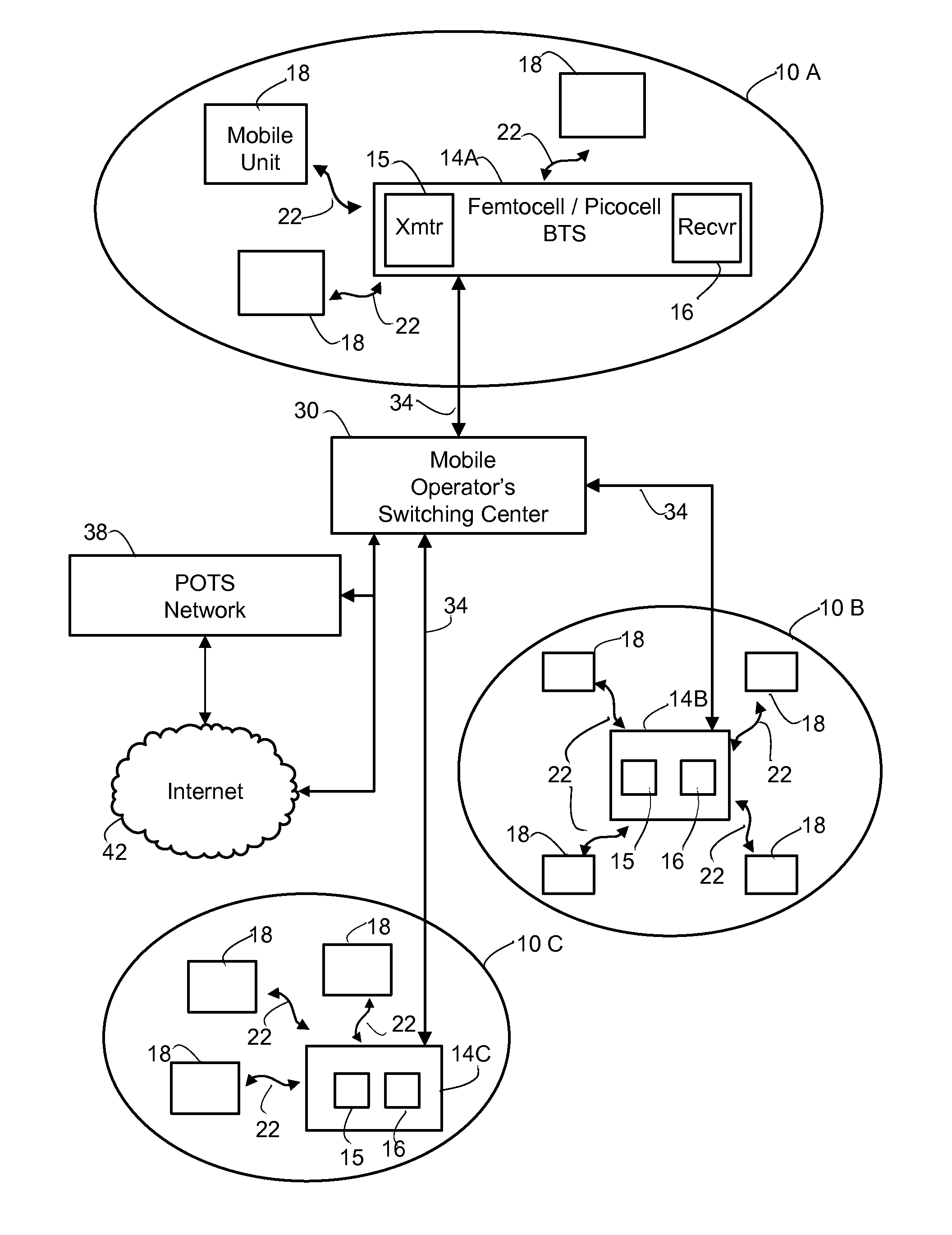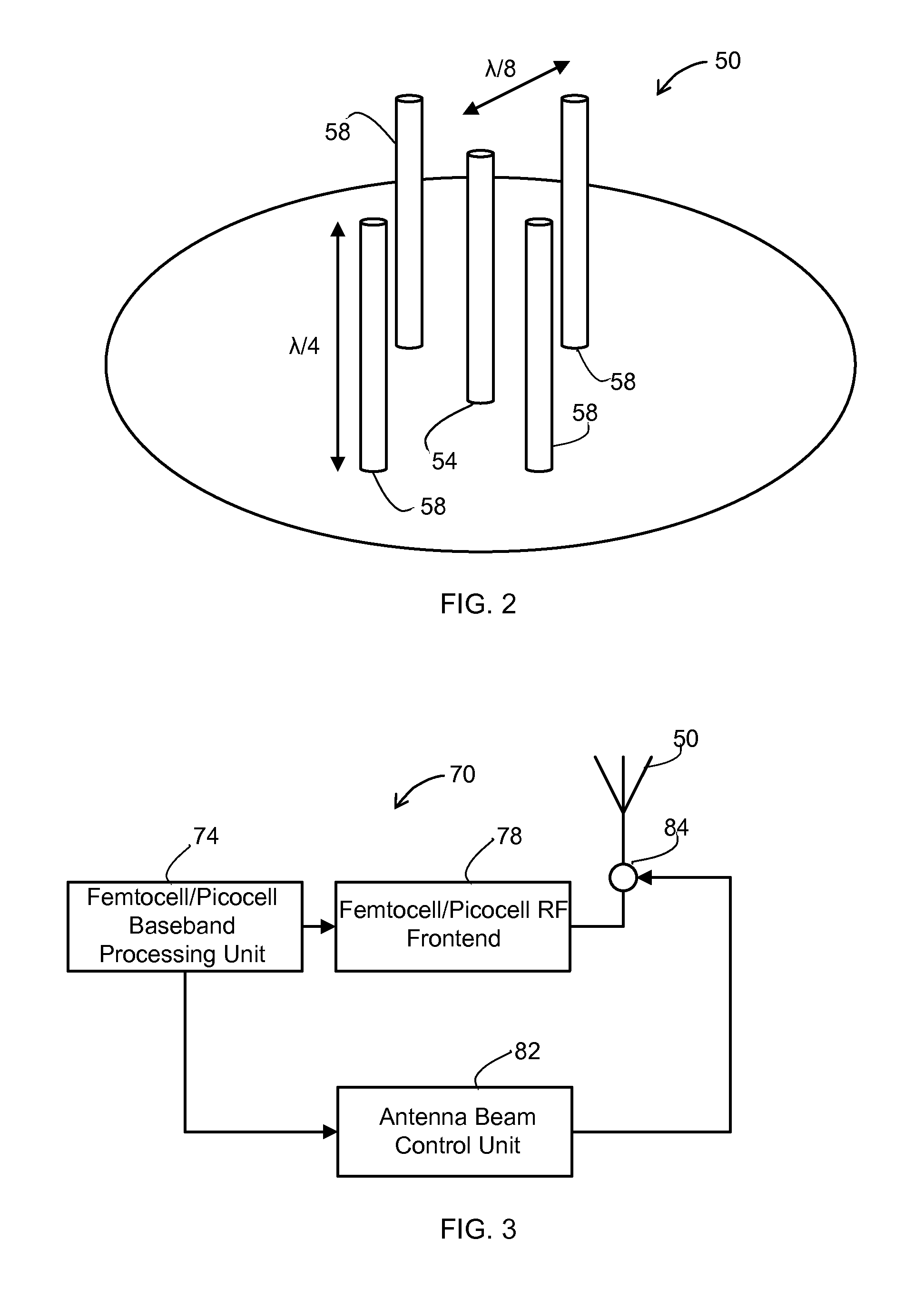Self-organizing networks using directional beam antennas
a directional beam antenna and self-organizing technology, applied in the direction of resonant antennas, substantially flat resonant elements, power management, etc., can solve the problems of interference in neighboring femtocells/picocells, interference in proximate or overlying macrocell coverage areas, and interference in particular problematic areas
- Summary
- Abstract
- Description
- Claims
- Application Information
AI Technical Summary
Problems solved by technology
Method used
Image
Examples
Embodiment Construction
[0035]Before describing in detail the various embodiments of an apparatus and method for reducing interference between signals carried within proximate femtocells, it should be observed that the present invention resides primarily in a novel and non-obvious combination of elements and process steps. So as not to obscure the disclosure with details that will be readily apparent to those skilled in the art, certain conventional elements and steps have been presented with lesser detail, while the drawings and the specification describe in greater detail other elements and steps pertinent to understanding the invention.
[0036]The following embodiments are not intended to define limits of the structure or method of the invention but only to provide exemplary constructions. The embodiments are permissive rather than mandatory and illustrative rather than exhaustive.
[0037]FIG. 1 illustrates several femtocell / picocell coverage areas 10A, 10B and 10C and a femtocell / picocell base transceiver ...
PUM
 Login to View More
Login to View More Abstract
Description
Claims
Application Information
 Login to View More
Login to View More - R&D
- Intellectual Property
- Life Sciences
- Materials
- Tech Scout
- Unparalleled Data Quality
- Higher Quality Content
- 60% Fewer Hallucinations
Browse by: Latest US Patents, China's latest patents, Technical Efficacy Thesaurus, Application Domain, Technology Topic, Popular Technical Reports.
© 2025 PatSnap. All rights reserved.Legal|Privacy policy|Modern Slavery Act Transparency Statement|Sitemap|About US| Contact US: help@patsnap.com



